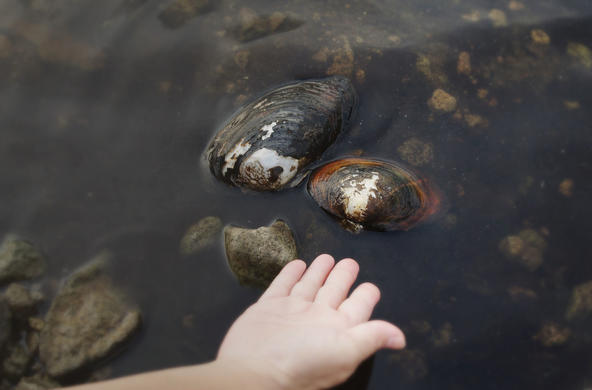Last Saturday, NPR’s Weekend Edition ran a story about keeping snails as pets, and I wish they hadn’t. Apparently snails are the trendy new pet (really!), and the story quoted happy snail owners extolling the virtues of their pets. Most of what NPR said in the piece was true. Snails are interesting animals that are fun to watch and easy to keep. But I’m afraid that the Weekend Edition story will encourage more people to get pet snails, and that could be a bad thing.
What in the world could be wrong with more people having pet snails?
Snails are among the world’s most damaging invasive species (three kinds of snails are on the list of “100 of the World’s Worst Invasive Alien Species”) For instance, in the Midwest, the invasive faucet snail carries a parasitic flatworm that kills thousands of ducks and other waterfowl each year. The golden apple snail was spread from South America to Asia, where it damages wetlands and rice fields to the point that farmers now use dangerous pesticides to control the snails, leading to several human fatalities. The Giant African Snail, a popular pet, attacks many crops, may spread plant (and human) diseases, and damages stucco buildings by eating them. So invasive snails cause widespread ecological and economic damages, and can even harm human health.
But that adorable little snail in your terrarium isn’t going to hurt anything, is it? Well, not unless it gets out. And when people keep pets, they always get out. Your cousin Dizzy decides that it would be cool to let their snails loose into the garden (won’t they be cute on the petunias?), or their hyperactive dog knocks over the terrarium they’ve been keeping on the patio, or they just get tired of having a terrarium, and toss it, snails and all, into the compost pile. Almost all of the pet owners that I know are super responsible, and would never do any of these things. But it only takes 1 Dizzy in 100 pet owners to ensure that lots of pets are let loose into the wild. Then we have Burmese pythons in the Everglades, snakeheads in the Potomac, and feral cats eating the world’s last Stephen’s Island wren.
You might think that you wouldn’t be able to buy any harmful snails (or any other harmful pets) in the first place because government regulations or voluntary screening by the pet industry would ensure that all species in the trade would be benign. In fact, here in the United States, there is little screening of animal imports as to whether the species is harmful, free of diseases, or even identified correctly. Nor do we generally have plans for detection or control of released pets when they start causing problems in the wild. Until then, we are counting on Dizzy’s discretion and care to protect our natural resources from their escaped pets. That’s reassuring, isn’t it?
What we really need is better federal (or industry) control of the non-native species moving into the United States through the pet trade and other pathways. But that’s not likely to happen anytime soon, in part because of opposition from the lucrative pet industry (“Big Pet”), which doesn’t want anything to eat into their bottom line, no matter what it might cost the rest of us. In the meantime, let me say what I wish NPR and other responsible news outlets would say when they run a story about the latest fad in trendy pets: be really careful that you don’t let those pets loose.






